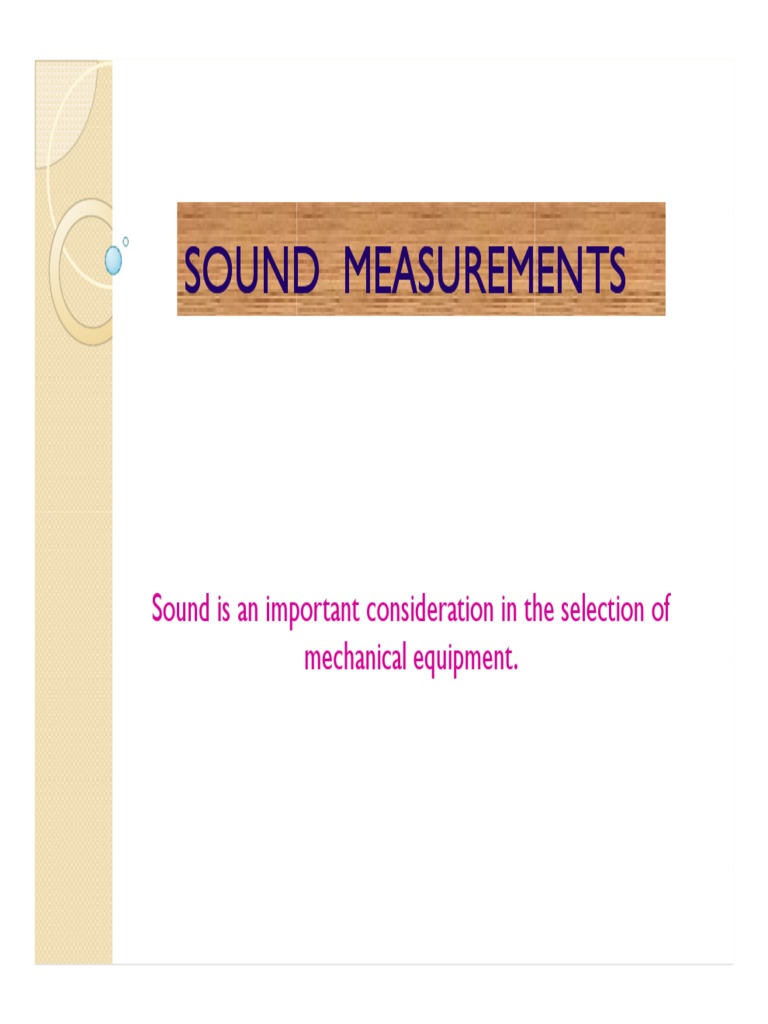Understanding The Sound Perimeter Of Music

Table of Contents
Defining the Sound Perimeter of Music
The "sound perimeter" refers to the perceived spatial dimensions of a musical performance. This isn't necessarily the same as the physical space where the music is created. Instead, it's the auditory image constructed in the listener's mind.
Physical vs. Perceived Space
A crucial distinction exists between the physical space where music is recorded or performed and the perceived sonic space experienced by the listener. This difference is shaped by numerous factors.
- Room Acoustics: The size, shape, and materials of a recording studio or concert hall dramatically affect how sound waves reflect and reverberate, shaping the sound perimeter. A large cathedral will create a vastly different spatial impression than a small, intimate jazz club.
- Speaker Placement: In a home stereo setup, the positioning of speakers significantly impacts the perceived width and depth of the soundstage. Precise placement is critical for achieving optimal stereo imaging.
- Headphone Technology: Headphones offer a unique and highly personal sound perimeter. Advances in binaural recording and headphone design allow for increasingly realistic spatial audio experiences, even in a completely enclosed environment.
- Binaural Recording: This technique simulates the way our ears naturally perceive sound, capturing subtle differences in timing and intensity between the left and right ears. This creates a more realistic and immersive sound perimeter, particularly in headphone listening.
- Psychoacoustics: Our brains play a significant role in interpreting sound. Psychoacoustics studies how we perceive and interpret sound, revealing how factors like reverberation, timing, and frequency influence our perception of spatial depth and width, contributing to our overall experience of the sound perimeter.
Elements Contributing to the Sound Perimeter
Several elements work together to craft the sound perimeter of a musical piece. Understanding these helps us appreciate the artistry involved in sound design and music production.
Stereo Imaging and Panning
Stereo imaging uses two channels (left and right) to create a sense of width and depth. Panning, the process of adjusting the balance between these channels, is a key tool for placing instruments in the perceived soundstage.
- Panning: By panning instruments to the left or right, producers can create a sense of space and movement within the sonic landscape. A carefully panned mix can create a wide and immersive sound perimeter.
- Limitations of Stereo: While effective, stereo has limitations. It struggles to create a convincing sense of height or surround sound. This limitation has led to the development of more sophisticated surround sound systems.
- Sweet Spot Listening: The "sweet spot" is the ideal listening position in a stereo setup where the soundstage is most accurately presented. Moving outside this spot can significantly alter the perceived sound perimeter.
Reverb and Delay
Reverb and delay are audio effects that significantly influence the perceived space of a musical recording.
- Reverb Types: Different reverb types (room, hall, plate, etc.) emulate different acoustic environments, impacting the size and character of the sound perimeter. A large hall reverb creates a spacious and expansive feel, while a smaller room reverb provides a more intimate sound.
- Delay: Delay effects create a sense of distance and space by repeating sounds with varying timing and intensity. This can be used to add depth and texture to the sound perimeter.
- Genre Influence: Reverb and delay are used extensively in various genres, each genre employing them in unique ways to shape the sound perimeter and contribute to its specific aesthetic. For example, a heavy use of reverb is typical in shoegaze, while delay is common in dub music.
Instrumentation and Arrangement
The choice and arrangement of instruments play a crucial role in shaping the sound perimeter.
- Spatial Characteristics of Instruments: Different instruments have inherent spatial characteristics. A string section, for instance, tends to have a wide spread, while a trumpet tends to be more focused.
- Layering and Orchestration: Layering and orchestration techniques, using multiple instruments and sound sources, significantly increase depth and width in the sonic landscape.
- Musical Texture: The overall texture of the music (dense vs. sparse) greatly impacts spatial perception. A dense texture can fill the soundstage, creating a more immersive experience, while a sparse texture can leave room for greater clarity and individual instrument definition.
The Impact of Technology on the Sound Perimeter
Technological advancements have revolutionized our experience of the sound perimeter.
Surround Sound and Immersive Audio
Surround sound systems, such as Dolby Atmos, aim for a fully immersive listening experience, going beyond the limitations of stereo.
- Surround Sound Formats: Different formats like 5.1, 7.1, and object-based surround sound offer varying levels of spatial immersion, placing sounds precisely around the listener.
- Immersive Listening: These technologies create a much more realistic and enveloping sound perimeter, significantly enhancing the listener's engagement with the music.
- 3D Audio in VR and Gaming: 3D audio plays a crucial role in virtual reality and gaming experiences, placing sounds in a virtual 3D space to create a fully immersive soundscape that enhances immersion and realism.
Headphone Technology and Spatial Audio
Headphone technology is constantly evolving to deliver more realistic spatial audio experiences.
- Head Tracking and Binaural Rendering: Advanced headphones utilize head tracking and binaural rendering to create a personalized sound perimeter, adapting to the listener's head movements.
- Headphone Types: Open-back and closed-back headphones provide different listening experiences, with open-back models generally offering a wider and more spacious soundstage.
- Spatial Audio Headphones: Several manufacturers now produce headphones specifically designed for optimal spatial audio reproduction, maximizing the perceived sound perimeter.
Conclusion
Understanding the sound perimeter is crucial for both musicians and listeners. By manipulating factors such as panning, reverb, delay, instrumentation, and utilizing advanced technologies like surround sound and specialized headphones, we can significantly shape and enhance the perceived spatial dimensions of music. The interplay of physical acoustics, psychoacoustics, and technological advancements creates a rich and evolving landscape for musical experience. By delving deeper into the sound perimeter of your favorite tracks, you unlock a richer, more immersive listening experience. So, start exploring the world of spatial audio today!

Featured Posts
-
 Ai Companies Win Big With Trumps Bill Cautious Optimism Ahead
May 21, 2025
Ai Companies Win Big With Trumps Bill Cautious Optimism Ahead
May 21, 2025 -
 Boosting Resilience Strategies For Better Mental Health
May 21, 2025
Boosting Resilience Strategies For Better Mental Health
May 21, 2025 -
 Did Luck Play A Role In Liverpools Victory Over Psg Arne Slots Analysis And Alissons Brilliance
May 21, 2025
Did Luck Play A Role In Liverpools Victory Over Psg Arne Slots Analysis And Alissons Brilliance
May 21, 2025 -
 David Walliams Leaves Lorraine Kelly Uncomfortable With Awkward Cancelled Remark
May 21, 2025
David Walliams Leaves Lorraine Kelly Uncomfortable With Awkward Cancelled Remark
May 21, 2025 -
 31 Month Jail Term Appealed Councillors Wifes Social Media Rant
May 21, 2025
31 Month Jail Term Appealed Councillors Wifes Social Media Rant
May 21, 2025
